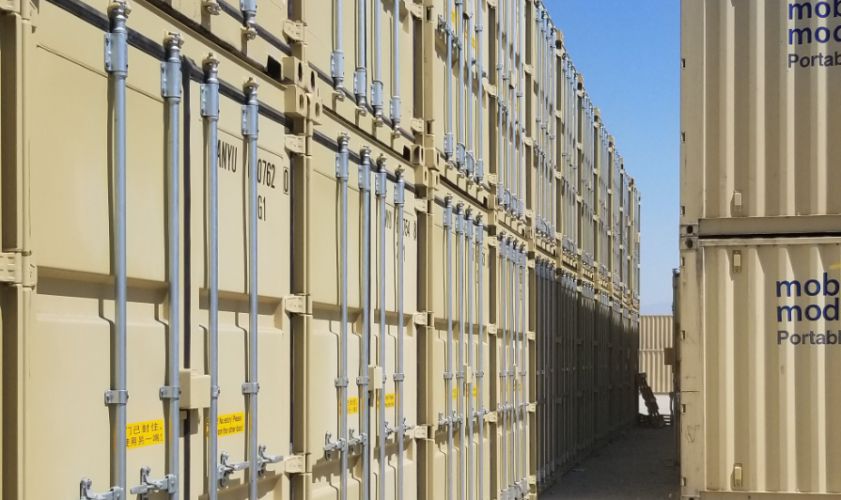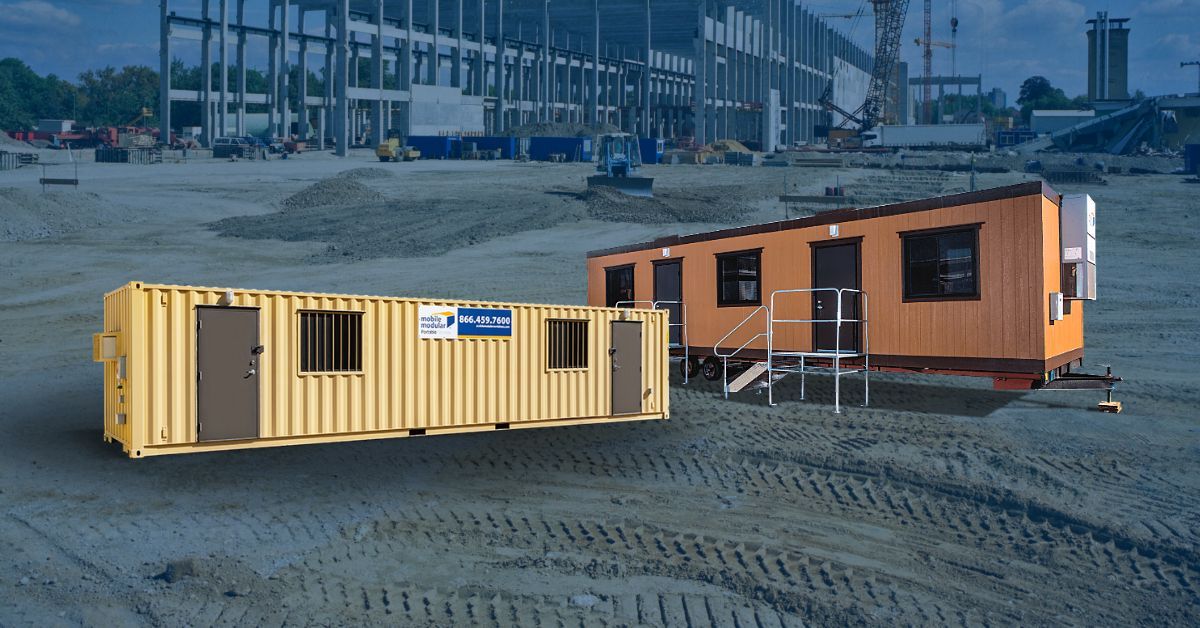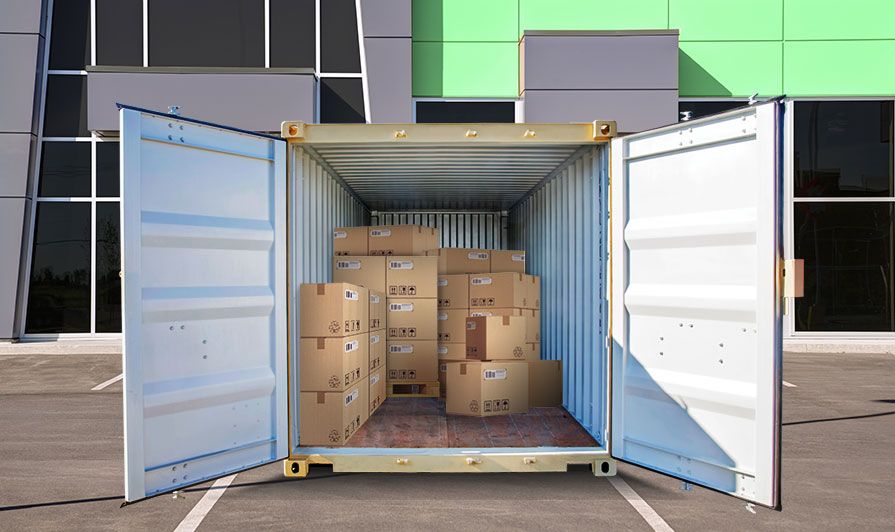- Rent, Lease, or Purchase
- |
September 17, 2020
What Are Shipping Containers Made Of?

Shipping containers are excellent storage solutions. They are designed to withstand harsh elements and built to last upwards of 25 years. In fact, it's these very qualities that have inspired folks to look towards shipping containers for more than simple storage. Today, you can find them used across industries for more creative uses. Many entrepreneurs have taken to shipping containers for usable retail or office space. Others have managed to turn containers for shipping into full-service restaurants. Some have even found ways to convert certain sizes of shipping containers into homes. Of course, when putting this much stock into a structure, it's important to know the materials and components involved. Keep reading to find out more information on what shipping containers are made of.
Steel Shipping Containers
Generally speaking, almost all shipping and storage containers come in Corten steel. Also known as weathering steel, this material possesses the physical properties that make it weldable and rust-resistant. That means if a piece of paint chips off the steel container, rust may form at the surface but will go no deeper. Corten steel is particularly important for shipping containers regularly exposed to inclement weather conditions. Remember, the oxidation process weakens the material, making it more susceptible to cracks, wear and tear, and water damage This will also make it less likely to protect the contents stored inside. Fortunately, special paint and primer are available to help protect against corrosion. A coat of paint can help a container last for years longer.
Aluminum Shipping Containers
While steel is a great option to use for heavy cargo operations, aluminum is another popular metal container storage option. Also known as reefer containers, these structures come with thick insulated walls and are lighter in weight compared to steel containers. They also possess thermal efficiency, which makes them ideal for the transportation of frozen or refrigerated items.
Polyethylene Shipping Containers
Containers made of polyethylene plastic are a great option for storing potable water, hazardous chemicals, and other liquid goods. These containers are manufactured using resins that meet FDA standards and specifications to ensure the safe storage of potable water. You’ll notice that some shipping containers come in darker colors like black or green. This helps reduce light penetration and algae growth.
Shipping Container Accessories
While the body of a storage unit may be made out of a specific material, they are also manufactured to contain a number of unique features. Listed below, we will introduce a variety of equipment found across shipping containers.
Corner Castings
Corner castings refer to the reinforced corners found on shipping containers. They are designed to be connected to other containers or anchor points and strong enough for crane rigging.
Corner Posts
Typically made of high tensile steel, a corner post refers to any one of the four vertical structures located at the four corners of a shipping container where corner fittings are joined. This is what makes stacking containers possible.
Roof Panels
Many roof panels are made of steel. This helps ensure the roofing system remains resistant to corrosion and eliminates future maintenance costs.
Twist Locks
This locking mechanism helps securely connect shipping containers to anchor points or other containers. They are designed to fit into the corner casting and then pivot into a locked position.
CSC Plate
CSC stands for International Convention for Safe Containers. This convention refers to a set of standards for shipping container design to prevent structural failure and protect human life when handling. The CSC plate affirms that the shipping container has been examined by a qualified inspector and is safe to transport cargo. The CSC plate also communicates that the shipping container has been issued an identification code that identifies the container owners and its intended use.
Marine-Grade Plywood Flooring
Most shipping containers are made with marine-grade plywood flooring. This material contains a small amount of insecticides to help keep bugs and pests away.
Bamboo Flooring
Bamboo floor panels are becoming a popular and more cost-effective alternative to marine-grade plywood flooring. This material is incredibly durable and mildew resistant. It’s also great for when aesthetics come into play, making it an extremely popular option among individuals using shipping containers for homes, retail, or office space.
Floor Beams
Shipping containers typically have steel beams on the underside of the floor that connect to the sidewalls. This helps ensure the container can support heavy cargo loads.
Forklift Pockets
Forklift pockets help reinforce slots designed to accommodate forklift lines and are located along the bottom edge of the shipping container.
Cargo Doors
Cargo doors refer to the two steel doors found on either end of a shipping container. Some containers have cargo doors on both ends or even on sidewalls. These doors help protect against theft and weather intrusion. Often, their door handles are made of plastic.
Cross Members
This term refers to beams or joists used to support the shipping container floor. The space they create between the ground and the floor frame prevents moisture from seeping in, helping mitigate the risk of water damage
Meet Your Shipping Container Needs with Mobile Modular Portable Storage
At Mobile Modular Portable Storage, we are always looking to offer superlative service at competitive prices. For all our rental consumers, we offer a 30-day billing cycle. That's two extra days over the industry norm of 28-day cycles.
We also maintain our team of sales specialists in-house. That means there's no dealing with call centers for our customers, you speak straight to a member of our in-house team who will have all the important information you might need.
Related Blogs



Subscribe to Our Blog
Enter your email address to subscribe to the blog and receive the notification of new posts by email.
Thank You for Subscribing to Our Blog!
Stay tuned for upcoming emails with valuable content that we hope will enhance your experience with our brand.
Both Pardot and mg360 form submissions failed.
